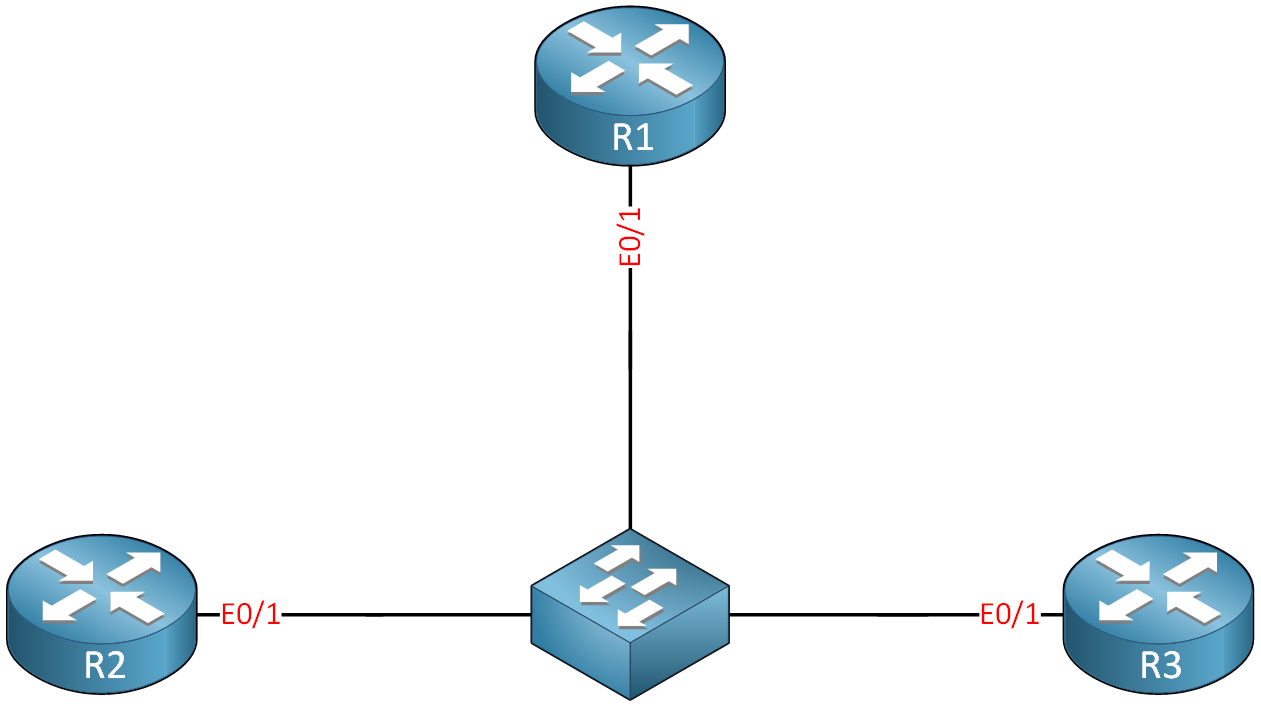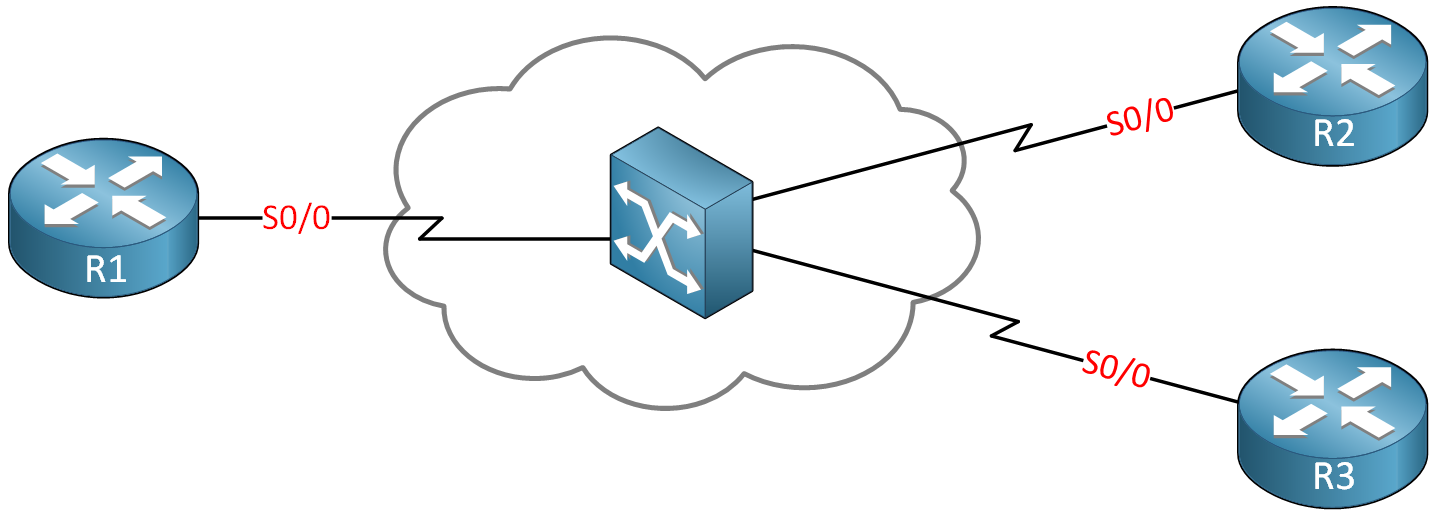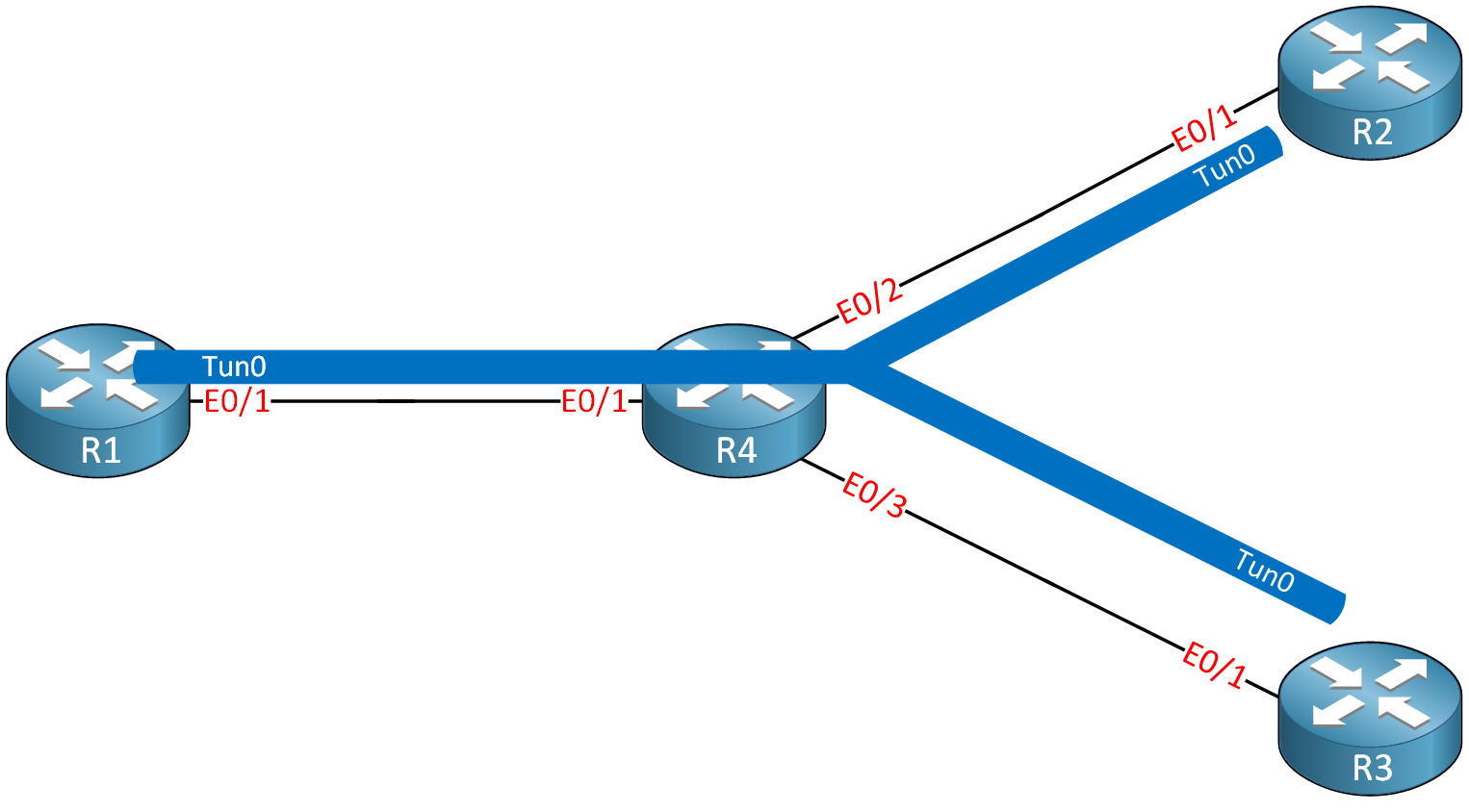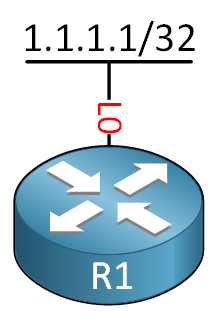Lesson Contents
Open Shortest Path First (OSPF) can be configured to work on various physical and topological networks, including Ethernet, GRE tunnels, GRE multipoint tunnels (DMVPN), and legacy WAN options such as Frame Relay, X.25, or ATM. To make OSPF work on different networks, it uses different network types.
There are four network types defined in the RFC standard:
And there are two vendor proprietary network types:
- Point-to-Multipoint Non-Broadcast (Cisco proprietary extension)
- Loopback (Multiple vendors)
Based on the OSPF network type, OSPF will:
- Automatically discover neighbors with multicast, or require manual neighbor configuration with unicast.
- Require a Designated Router (DR) and Backup Designated Router (BDR) election or not.
- Use different hello and dead interval timers.
When you configure OSPF on an interface, it will automatically select an OSPF network type that matches the interface. For example:
- Ethernet: Defaults to Broadcast
- HDLC/PPP: Defaults to Point-to-Point
- Frame Relay: Defaults to Non-Broadcast Multi-Access (NBMA)
While these defaults are often correct, OSPF can’t know our network’s logical topology. For example, on an Ethernet interface, it doesn’t know whether that link connects to multiple routers connected to a switch, or if there is only one other router on the other end of the link. With Frame Relay, it could be a point-to-point link or a hub-and-spoke topology.
Sometimes, we need to manually change the network type so it matches our logical topology.
Choosing the right network type is important because it determines:
- How OSPF neighbors are discovered (automatically via multicast or manually via unicast).
- Whether a Designated Router (DR) and Backup Designated Router (BDR) are elected.
- The default Hello and Dead interval timers.
- How next-hop information is handled.
We do this on a per-interface basis. On a Cisco IOS router, you can see the available options with the following command:
R1(config-if)#ip ospf network ?
broadcast Specify OSPF broadcast multi-access network
non-broadcast Specify OSPF NBMA network
point-to-multipoint Specify OSPF point-to-multipoint network
point-to-point Specify OSPF point-to-point networkNetwork type point-to-multipoint non-broadcast is a parameter of network type point-to-multipoint:
R1(config-if)#ip ospf network point-to-multipoint ?
non-broadcast Specify non-broadcast point-to-mpoint networkThe network type loopback is not configurable and is the default for loopback interfaces.
An incorrect network type can prevent OSPF from establishing neighbor adjacencies or cause flapping neighbor adjacencies. Let’s take a closer look at each network type.
OSPF Network Types
Broadcast
The Broadcast network type is designed for multi-access segments where all routers can communicate directly and support Layer 2 broadcasts, like an Ethernet LAN. This is the default type for Ethernet interfaces.

Because multiple routers exist on the same segment, OSPF elects a DR and a BDR. This optimizes the Link State Advertisement (LSA) flooding process. Instead of every router forming an adjacency with every other router, they only form full adjacencies with the DR and BDR.
- Neighbor Discovery: Automatic, using multicast hello packets sent to 224.0.0.5.
- DR/BDR Election: Yes.
- Default Timers:
- Hello interval 10 seconds
- Dead interval 40 seconds.
- LSA Behavior: The DR generates a Type 2 Network LSA to represent the multi-access segment.
Non-Broadcast Multi-Access (NBMA)
The Non-Broadcast Multi-Access (NBMA) network type is for networks that connect multiple routers but do not have native broadcast or multicast capabilities. Classic examples include Frame Relay and X.25.

Like the broadcast type, it assumes a multi-access topology and elects a DR and BDR. However, since multicast is unavailable, we must manually configure each neighbor’s IP address. OSPF will then use unicast hello packets to establish adjacencies.
- Neighbor Discovery: Manual
- DR/BDR Election: Yes.
- Default Timers:
- Hello interval 30 seconds
- Dead interval 120 seconds.
The longer default timers, compared to the network type Broadcast, are intended to provide stability on slower, less reliable WAN links.
Point-to-Point
The Point-to-Point network type is for links that connect exactly two routers. Think of a classic serial link using PPP or HDLC, or a dedicated Ethernet link between two devices.

With only two routers, a DR/BDR election is unnecessary overhead. This network type disables the election process, which improves the convergence time for neighbor adjacencies.
- Neighbor Discovery: Automatic, using multicast hello packets.
- DR/BDR Election: No.
- Default Timers:
- Hello interval 10 seconds
- Dead interval 40 seconds.
This is the most efficient network type for links with only two routers. Even on Ethernet, if you have only two routers on a link, changing the network type from broadcast to point-to-point is a good idea, as OSPF won’t perform a DR/BDR election.
Point-to-Multipoint
The Point-to-Multipoint network type is a modern solution for NBMA topologies, especially hub-and-spoke topologies. It treats the network as a collection of point-to-point links.

This network type does not elect a DR or BDR. If the underlying network supports multicast (like some Frame Relay or DMVPN configurations), neighbors are discovered automatically. Each router forms a direct adjacency with its neighbors without a DR.
- Neighbor Discovery: Automatic via multicast (if available).
- DR/BDR Election: No.
- Default Timers:
- Hello interval 30 seconds
- Dead interval 120 seconds.
Point-to-Multipoint Non-Broadcast
This is a variation of point-to-multipoint for environments that do not support multicast. It behaves identically to point-to-multipoint but requires manual neighbor configuration, similar to the NBMA type.

This type is useful in DMVPN Phase 1 or Phase 2 deployments where direct spoke-to-spoke communication might be blocked or undesirable for OSPF.
- Neighbor Discovery: Manual. Neighbors are defined statically and use unicast Hellos.
- DR/BDR Election: No.
- Default Timers:
- Hello interval 30 seconds
- Dead interval 120 seconds.
Loopback
The Loopback network type is applied automatically to loopback interfaces. OSPF always advertises a loopback interface as a /32 host route, no matter what subnet mask you have configured. For example, if you configured 192.168.1.1/24 on a loopback interface, OSPF would advertise it as 192.168.1.1/32. It is possible to change the network type to point-to-point so you can advertise the actual network configured on the loopback interface. This can be useful for labs.

Summary Table
Here is a quick reference table summarizing the key differences between the OSPF network types.

